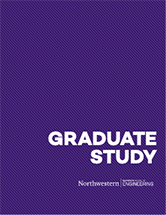An Architect’s Journey to MPM
Diego Fernandez went from building Lego sets as a boy to leading projects for more than a half-million-square-feet of medical space in his native Colombia. Now he’s seeking more.
As a small child growing up in Bogota, Colombia, Diego Fernandez (MPM ‘25) spent hours putting together elaborate Lego sets based on the instructions in the box.
Then the real fun would begin.

Now, Fernandez has many creative projects to his name using more life-sized construction materials than small plastic blocks. And he's excited to do even more. He moved to the United States to pursue Northwestern Engineering's Master of Science in Project Management (MPM) degree and boost his career.
Fernandez was drawn to the MPM program because of its curriculum and the opportunity to learn alongside other professionals from the built environment sector.
“The program covers all the bases of project management,” he said. “With the specialization tracks, each student can take classes specific to their professional aspirations.”
Fernandez’s first professional opportunity involved a non-traditional project — the development of a master plan to expand a graveyard on the outskirts of Bogota.
This was not the type of project he learned about as an undergraduate architecture student, but it proved to be a rewarding first endeavor that helped shape his career path, he said.
“It was one of the projects that taught me the most,” he said. “All the development helped people through their grief by transforming a section into a park and intended to provide better amenities while mitigating its environmental footprint.”
Fernandez then spent five years with global real estate services firm CBRE Colombia, first as a project manager and then as a senior project manager.
In that first role, he led the management of projects totaling more than 250,000 square feet for various clients. After his promotion in March 2022, he led healthcare projects that resulted in the development of more than 570,000 square feet of clinical space.
That latter role served a particularly large need in Colombia, he said.
“Colombia has many needs in medium and small cities, especially hospitals, educational projects, and other public services,” he said. “I'm excited to learn as much as possible in MPM and practice in the US to deepen my knowledge and develop better projects in Colombia.”
Fernandez said his plan is to finish the MPM program, work in the United States for a few years, and then return to Colombia to lead projects in his home country. He is interested in implementing lean construction into his projects and using his knowledge to reduce project time, waste, and costs.
His MPM experience has already contributed greatly to his overall knowledge base, he said.
“The opportunity to engage with people from backgrounds in finance, administration, or logistics has helped me think of issues I never experienced,” Fernandez said. “Whether or not you have some experience in a particular subject, MPM can deepen your knowledge, give you a new perspective, and give you different approaches through discussion with your peers.”
Because of his own experiences, Fernandez has become a strong advocate for the MPM program in Colombia.
Adjusting to life in the United States was easier than he thought it would be, and he hopes others from his home country consider the MPM program to grow their career in the built environment sector.
“The people of the Midwest are welcoming, and Chicago is a city filled with things to do,” Fernandez said. "MPM is an excellent program for setting foundations, exploring new things, and starting to engage with key players in the built environment."

